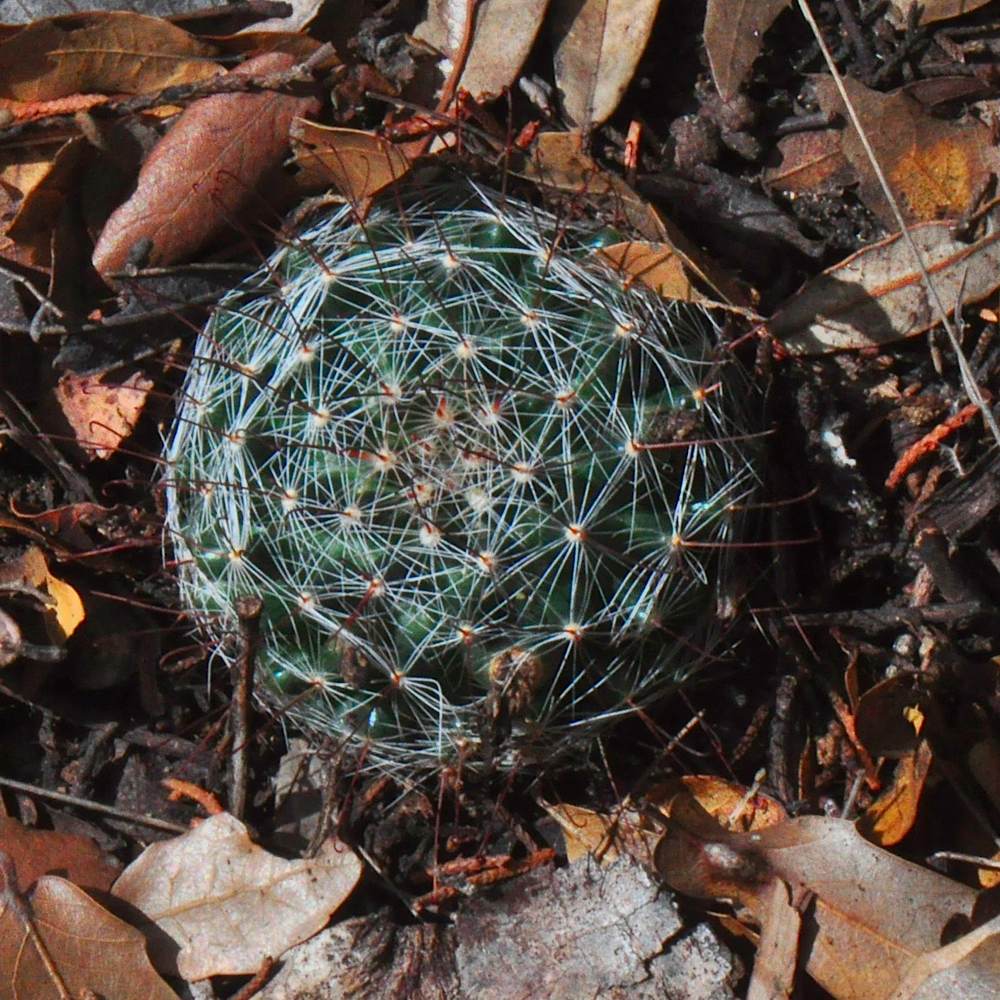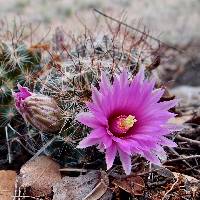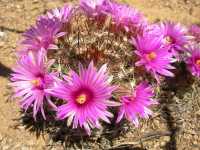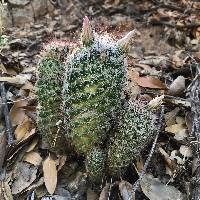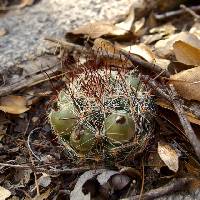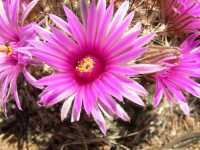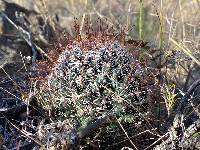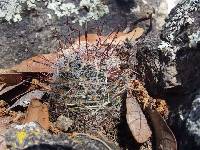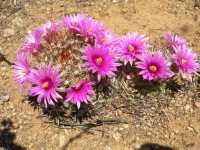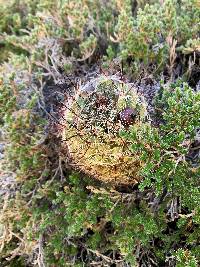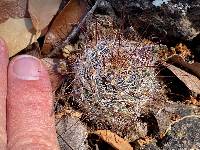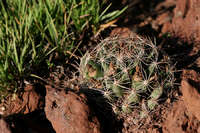Mammillaria wrightii
|
|
|
|
Family: Cactaceae
Wright's Nipple Cactus, more...Wright pincushion cactus
|
Plants usually unbranched. Roots: upper portion of primary root somewhat thickened and succulent proximally, otherwise fibrous. Stems flat-topped or spheric, 4-8 × 4-8 cm, ± flaccid; tubercles 6-24 mm; axils appearing naked; cortex and pith mucilaginous; latex absent. Spines 9-31(-34) per areole, white, usually tipped brown; radial spines 8-30 per areole, in 1 series, glabrous (puberulent in first year flowering plants); lateral spines bristlelike, 7-11 mm, stiff, longest and thickest of spines; adaxial spines often darker; central spines 1-4(-7) per areole, porrect or strongly projecting, 1 or all hooked, (5-)12-14(-21) mm; subcentral spines 0. Flowers 2.5-3.5(-5.2) × 2.2-4.5(-7.5) cm; outer tepal margins conspicuously fringed; inner tepals rose-pink or magenta [white], margins often paler; stigma lobes yellow or pale green (rarely reddish). Fruits green or dull purple, spheric to ovoid or obovoid, (9-)13-20(-28) × (6-)7-1.9(-26) mm, juicy throughout; floral remnant persistent. Seeds black, 1.3-1.5 mm, pitted; testa hard, anticlinal cell walls straight (not undulate); interstices conspicuously narrower than pit diameters; pits bowl-shaped. 2n = 22. Benson 1982, FNA 2003 Common Name: Wright's nipple cactus Duration: Perennial Protected Status: No status in Arizona. General: Low globose cactus that is usually unbranched and less than 10 cm the stems spheric or flat-topped, usually 4-8 cm tall by 4-8 cm wide with tubercles 6-24 mm and axils that appear naked, latex absent. Spines: Spines dense and partially obscuring the stem which results in the color effect of gray-tan, usually 9-34 spines that are generally white and tipped brown, the 8-30 radial spines are straight and wrapping parallel around stem, with 1-7 central spines dark reddish brown, these all hooked and porrect or strongly projecting about 25 mm with stiffly bristlelike lateral spines that are 7-11 mm, the longest and thickest of spines. Flowers: Flower 22-75 mm diameter with outer tepals fringed and inner tepals rose-pink or magenta, lanceolate linear while spreading widely and forming a shallow bowl, the anthers are yellow, the style is reddish-purple to green, while the flowers form a circle near the stem apex. Fruits: Fruits a dull purple or green and spheric to obviod, 9-28 mm long by 6-26 mm diameter, they are juicy throughout and have a persistent floral remnant. Ecology: Found in grasslands, pi-on-juniper woodlands, on gentle slopes, while usually being on alluvial or igneous substrates from 4,000-7,000 ft (1219-2134 m); flowers summer, fruits fall. Notes: Considered a rare plant in many counties in Arizona. Juvenile plants may be mistaken for M. viridiflora, according to Benson (1982), since the vegetative characteristics are similar. On the young stem at first there is only one central spine per areole, the areole nearly circular, which changes gradually in the new areoles as the stem grows. Ours are likely from both var. wilcoxii and var. wrightii, the latter FNA notes as being sympatric with M. viridiflora but usually in deeper soils, while the former is noted as having more radial spines per areole. Ethnobotany: Stems and ripe fruit used for food. Etymology: Mammillaria comes from the Latin mammilla, a nipple, while wrightii is named after Charles Wright (1811-1855), an American botantical collector who collected plants for Professor Asa Gray at Harvard, and later worked on the Mexican Boundary Survey, collecting plants for Professor John Torrey. Synonyms: None Editor: LCrumbacher, 2010 |
|
|
|

